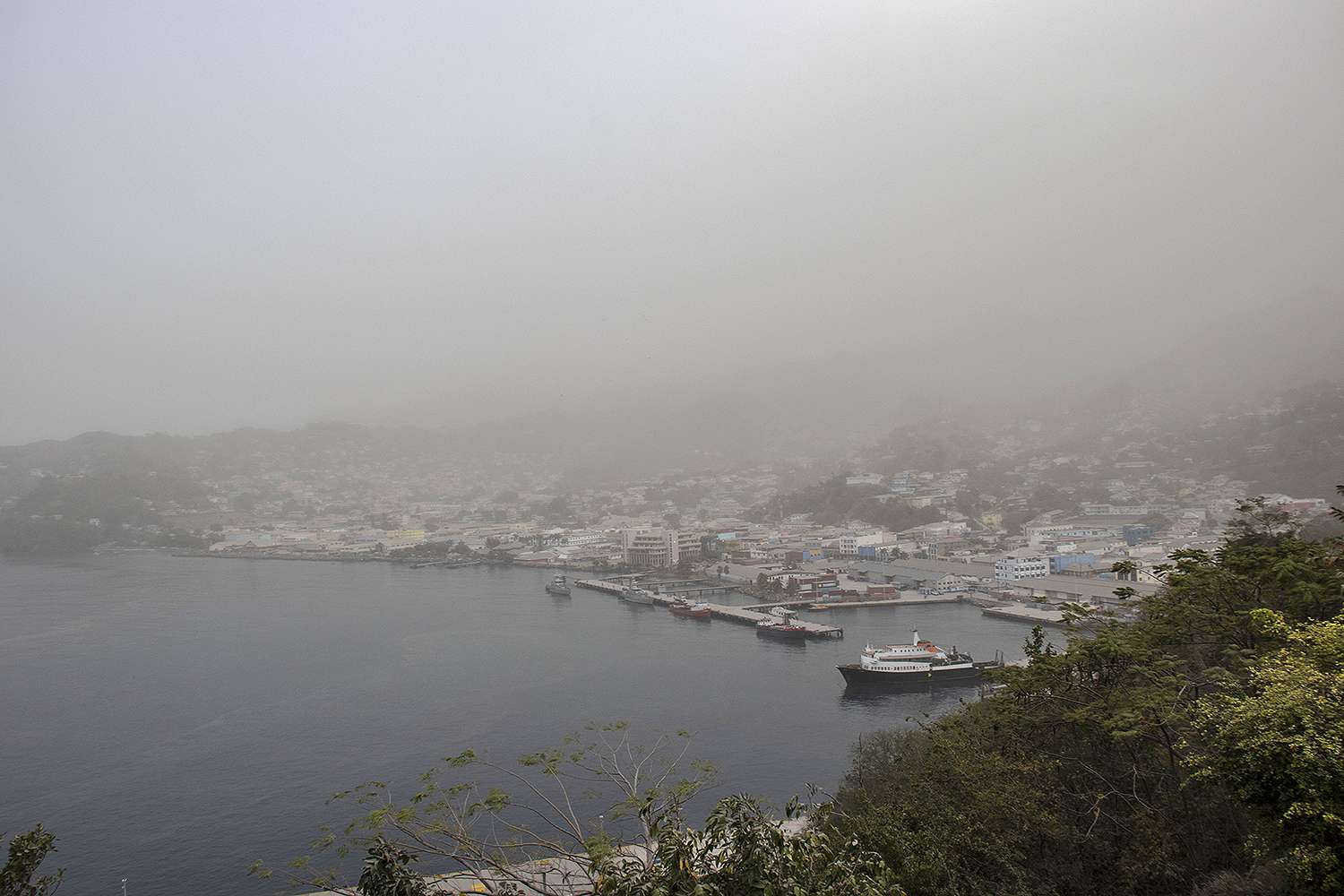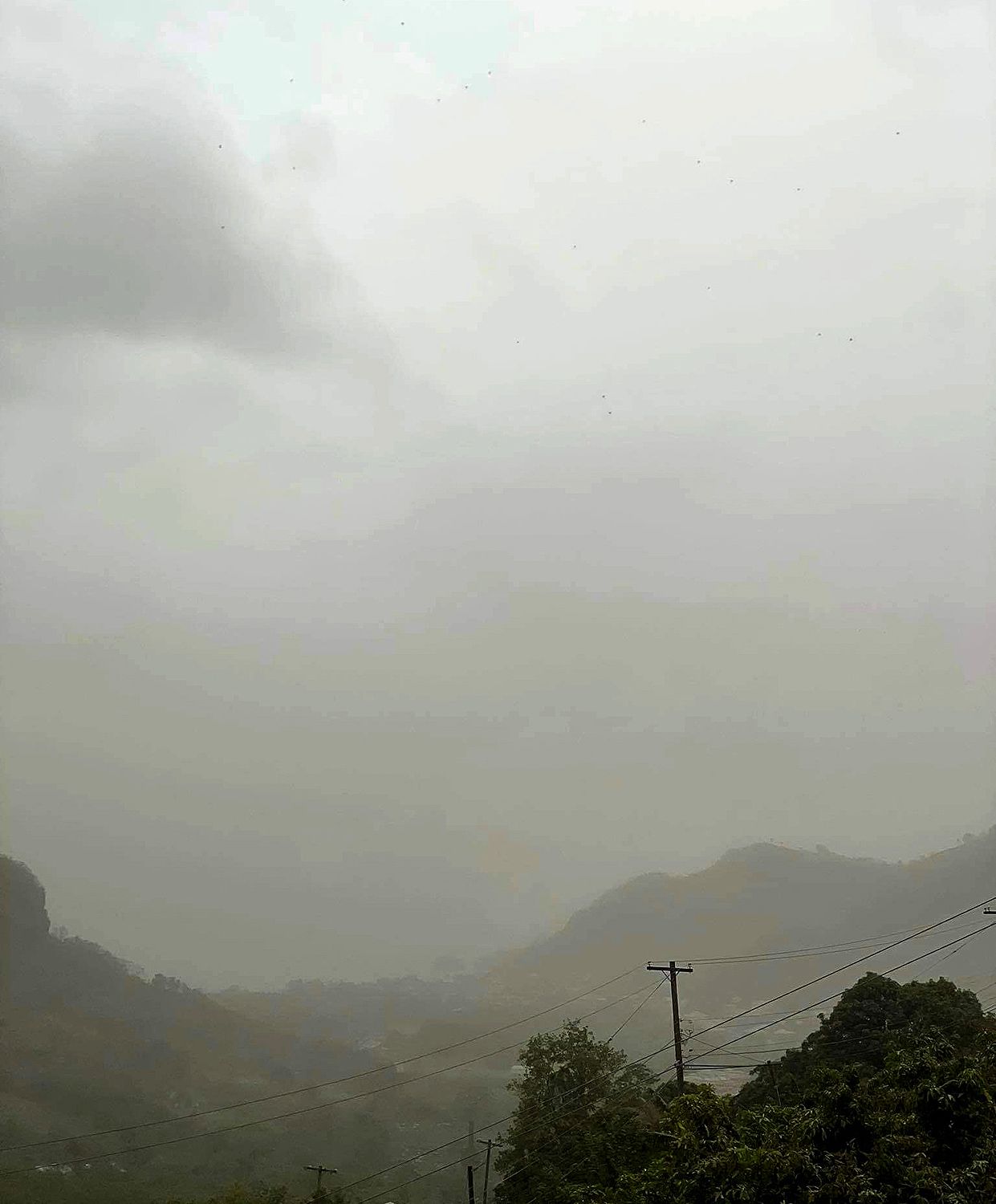Three days after erupting for the first time in decades, the La Soufrière volcano is continuing to erupt "explosively," blanketing the main island of St. Vincent and the Grenadines in ash and debris.
The volcano was still spewing ash and hot gas on Monday as it blasted its biggest explosive eruption yet, according to the Associated Press.
"It's destroying everything in its path," Erouscilla Joseph, director of the University of the West Indies' Seismic Research Center, told the outlet. "Anybody who would have not heeded the evacuation, they need to get out immediately."
Though government orders prompted the evacuations of about 16,000 people on Thursday, an unknown number reportedly stuck around, though there were no reports of injuries or death following Friday's initial eruption.
Finance Minister Camillo Gonsalves said the government expects about 20,000 people of the island chain's 100,000 inhabitants to be displaced for the next three to four months, Reuters reported.
"Historically, the volcano keeps going intermittently for a couple months," he said. "Most crops on island will be lost, and untold livestock."
The National Emergency Management Organization (NEMO) said Monday morning that La Soufrière had begun generating pyroclastic density currents, which are "ground-hugging flows of ash and debris" that can range from 392-1292 degrees Fahrenheit, according to SVG Health.
"Explosions and accompanying ashfall, of similar or larger magnitude, are likely to continue to occur over the next few days," NEMO said on Twitter.
Richard Robertson, of the seismic research center, said that La Soufrière's new and old dome were destroyed in the eruptions, and that a new crater has been created, the AP reported.
He added that the pyroclastic density currents would have destroyed anything in their path.
"Anything that was there, man, animal, anything…they are gone," he said. "And it's a terrible thing to say it."
SVG Health said early Monday morning that since midday on Sunday, the time between episodes of high-amplitude tremors has lengthened to five to eight hours, and that small volcano-tectonic earthquakes were recorded starting about 6 p.m. local time on Sunday.
The volcano erupted early Friday morning for the first time since 1979 after first showing signs of "renewed activity" in December, according to The New York Times.
A second, smaller explosive eruption occurred on Friday afternoon, and the island was "blanketed in ash" Friday night, according to NEMO.
By Saturday, most of the country was without power and covered in ash, and on Sunday, NEMO said that "everything looks like a battle zone."
Prime Minister Ralph Gonsalves called the area "desolate," according to NEMO.
The area had been fully evacuated on Thursday after small tremors were detected at the volcano, the Times reported.
Still, a government minister toured the northeast region of the island on Sunday, and told the Associated Press he saw about two or three dozen people who did not evacuate in the Sandy Bay community.
The 1979 eruption did not cause any deaths, but did result in about $100 million worth of damages, Reuters reported. A 1902 blast, meanwhile, killed nearly 1,700 people.
Source: Read Full Article


